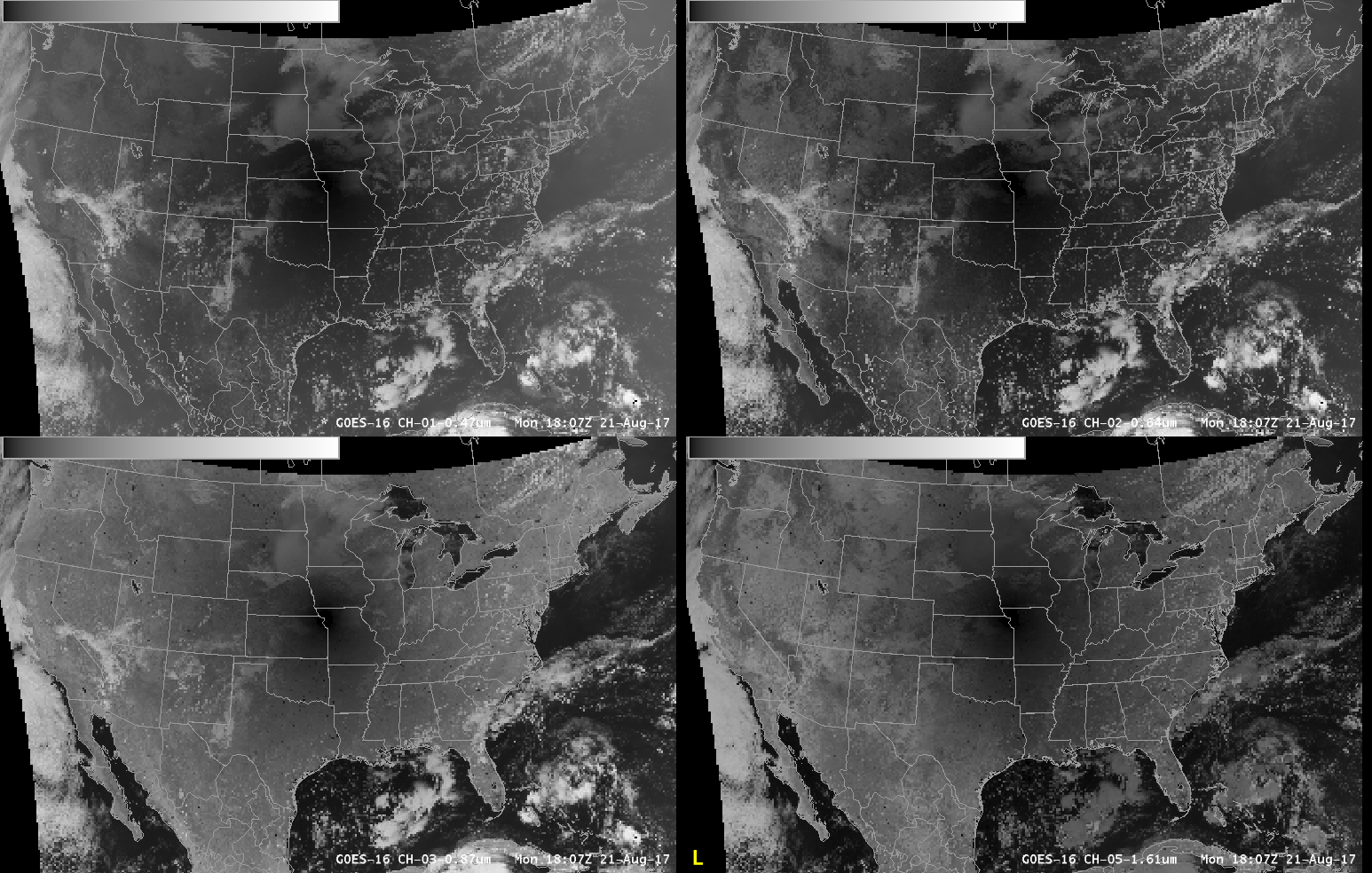Total solar eclipse of 21 August 2017 – a satellite perspective
* GOES-16 data posted on this page are preliminary, non-operational and are undergoing testing*
GOES-16 CONUS Sector images (at 5-minute intervals)

GOES-16 “Blue” Visible (0.47 µm, upper left), “Red” Visible (0.64 µm, upper right), “Vegetation” (0.86 µm, lower left) and “Snow/Ice” (1.61 µm, lower right) images [click to play animation]
GOES-16 “Red” Visible (0.64 µm) images, with hourly surface reports plotted in yellow [click to play animation]
GOES-16 Shortwave Infrared (3.9 µm) images, with hourly surface reports plotted in yellow [click to play animation]
GOES-16 Mesoscale Sector images (at 1-minute intervals)
1-minute GOES-16 “Red” Visible (0.64 µm) images, with station identifiers plotted in yellow [click to play animation]
Polar-orbiting satellite images (Terra MODIS, and Suomi-NPP VIIRS)
![Terra MODIS Visible (0.65 µm). Land Surface Temperature product, Shortwave Infrared (3.7 µm) and Infrared Window (11.0 µm) images [click to enlarge]](https://cimss.ssec.wisc.edu/satellite-blog/wp-content/uploads/sites/5/2017/08/170821_1739utc_terra_modis_Visible_LandSurfaceTemperature_ShortwaveInfrared_InfraredWindow_eclipse_shadow_anim.gif)
Terra MODIS Visible (0.65 µm), Land Surface Temperature product, Shortwave Infrared (3.7 µm) and Infrared Window (11.0 µm) images [click to enlarge]


![GOES-16 true-color RGB images [click to play animation]](https://cimss.ssec.wisc.edu/satellite-blog/wp-content/uploads/sites/5/2017/08/tce_25.png)
![Suomi NPP VIIRS Visible (0.64 µm), Day/Night Band (0.7 µm) and Infrared Window (11.45 µm) images [click to enlarge]](https://cimss.ssec.wisc.edu/satellite-blog/wp-content/uploads/sites/5/2017/08/170821_1827utc_suomi_npp_viirs_Visible_DayNightBand_InfraredWindow_eclipse_shadow_anim.gif)
![Suomi NPP VIIIRS Day/Night Band (0.7 µm) and Infrared Window (11.45 µm) images [click to enlarge]](https://cimss.ssec.wisc.edu/satellite-blog/wp-content/uploads/sites/5/2017/08/170821_1827utc_suomi_npp_viirs_DayNightBand_InfraredWindow_eclipse_shadow_zoom_anim.gif)